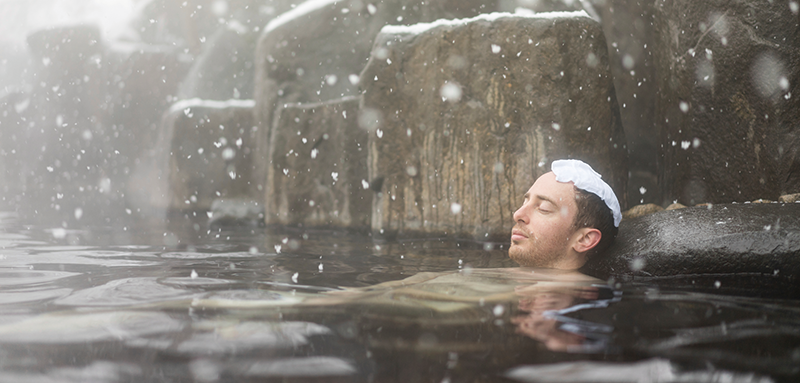By Matt Klampert
Buckwheat noodles called soba may seem ubiquitous all over Japan, but they have a special significance within YUKIGUNI. Soba has long been grown and eaten here, including some famous dishes that people come from all over Japan to sample. As you will soon find out, soba are no ordinary noodles- let’s learn more about them!

The history of soba in Snow Country
Soba was first eaten in the Edo period over 300 years ago. It is said that soba in YUKIGUNI was originally used as a divine offering, but due to its nutritional value was eaten in addition to rice, our region’s other agricultural staple. Soba is rich in antioxidants (such as rutin) and amino acids, and these days is considered a staple food in the Japanese diet. In fact, agricultural areas that do not grow our delicious Koshihikari rice are often set aside for the growing of soba. First, seeds are spread in summer, and then harvested – often by hand – in the fall, when they are set out to dry and then ground and made into dough, which is cut into long thin strips. The biggest reason why Snow Country soba is so delicious is due to the purity of our water, which is essential not just for soba and rice, but also our premium sake.
Eating “hegi soba” in Yuzawa’s Onsen Street
The town of Yuzawa in Niigata Prefecture is known as the gateway to the Snow Country region, and is a foodie’s delight, with great izakaya and famous sweets such as sasadango. It is also the perfect place to try “hegi soba.” This special soba gets its name from a wooden tray called a “hegi,” which is notably different from the straw “zaru” style tray that you will typically see cold soba served on.
One thing that people may notice in regards to Japanese cuisine is that some dishes are meant to be shared. In the case of hegi soba, one order is meant for groups of two or more, unlike most other soba dishes that are usually for one person. Each hegi soba is often tied, so you can take yours and eat it in one bite. As for toppings, it varies by region: for example, while wasabi is used in Yuzawa, other areas often use karashi, spicy Japanese mustard.
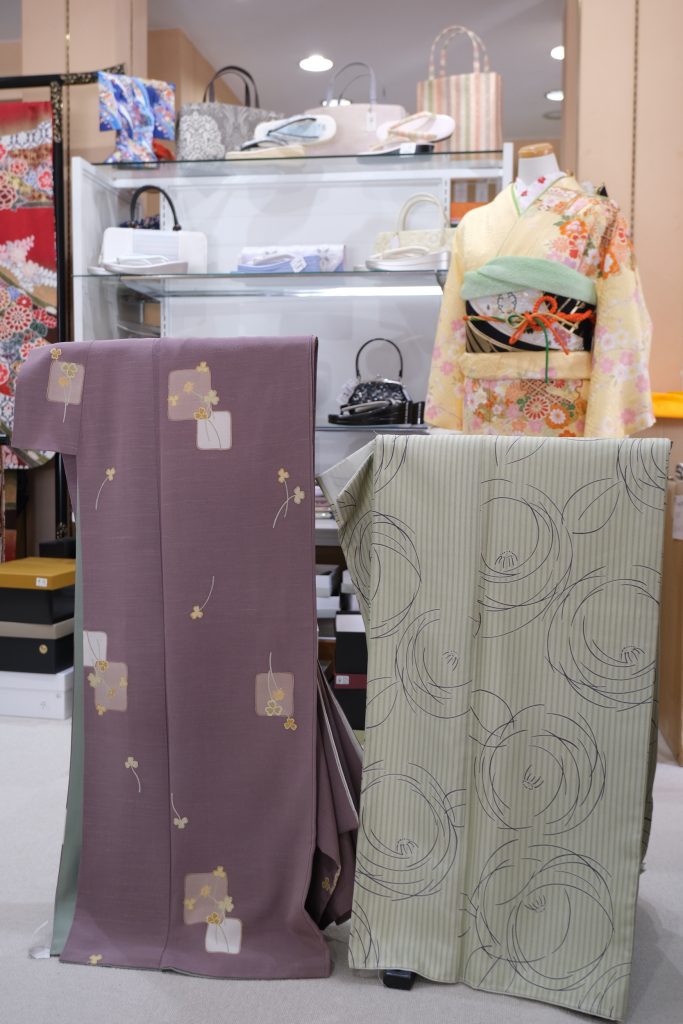
Noodles and Kimono
The other distinguishing feature of hegi soba is the use of a type of seaweed called “funori.” Unlike other types of edible seaweed such as green nori, funori is distinguished by its pinkish color. Funori is not grown in the Snow Country region, but had an important use in making our special kimono. Funori was used to make the kimono fabric smooth and easy to weave in the kimono factories around Shiozawa and Tokamachi. In fact, hegi soba is said to have been traditionally eaten while making kimono, and when these busy kimono makers were free they would grab one to snack on. Click HERE to learn more about famous kimono in YUKIGUNI, including how to sign up for your own kimono fitting!
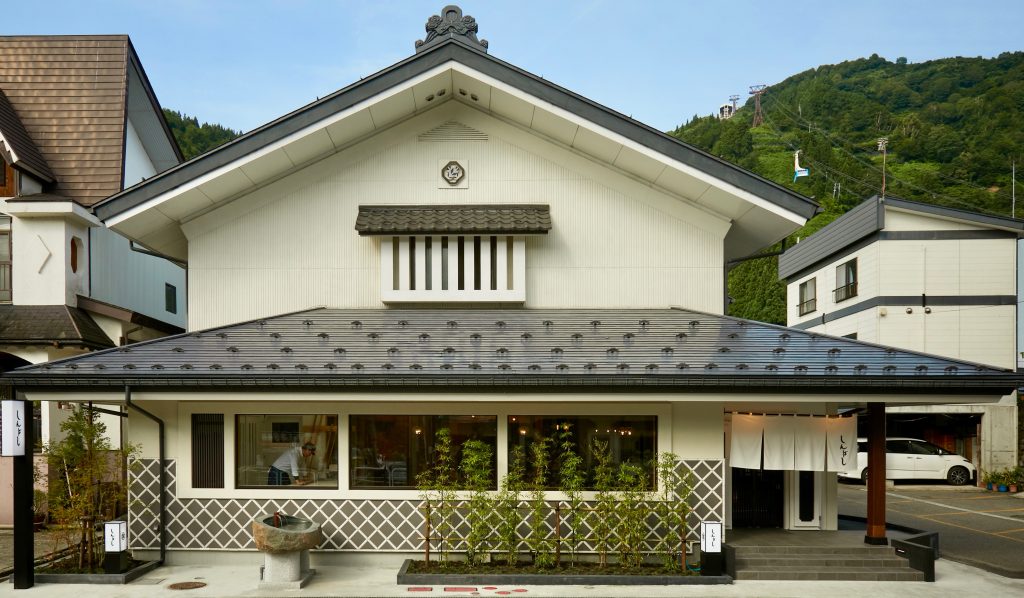
About Shinbashi – a historic soba shop in Yuzawa
One of the oldest and most famous soba restaurants around Yuzawa’s onsen street is Shinbashi. This shop opened in 1931, which coincided with the completion of the Shimizu tunnel near Doai station on the Joetsu train line, and the expansion of the line to finally allow service between Yuzawa in Niigata and Minakami in Gunma. The restaurant is well known for their maidake mushroom tempura, herring, and of course, locally grown handmade hegi soba. Shinbashi’s hegi soba is notable for being served loose, and with a smaller amount of funori, in order for the dish to retain its distinctive soba smell. Shinbashi uses arabiki kona, which is coarsely ground buckwheat, and is considered more difficult to use than normal buckwheat.
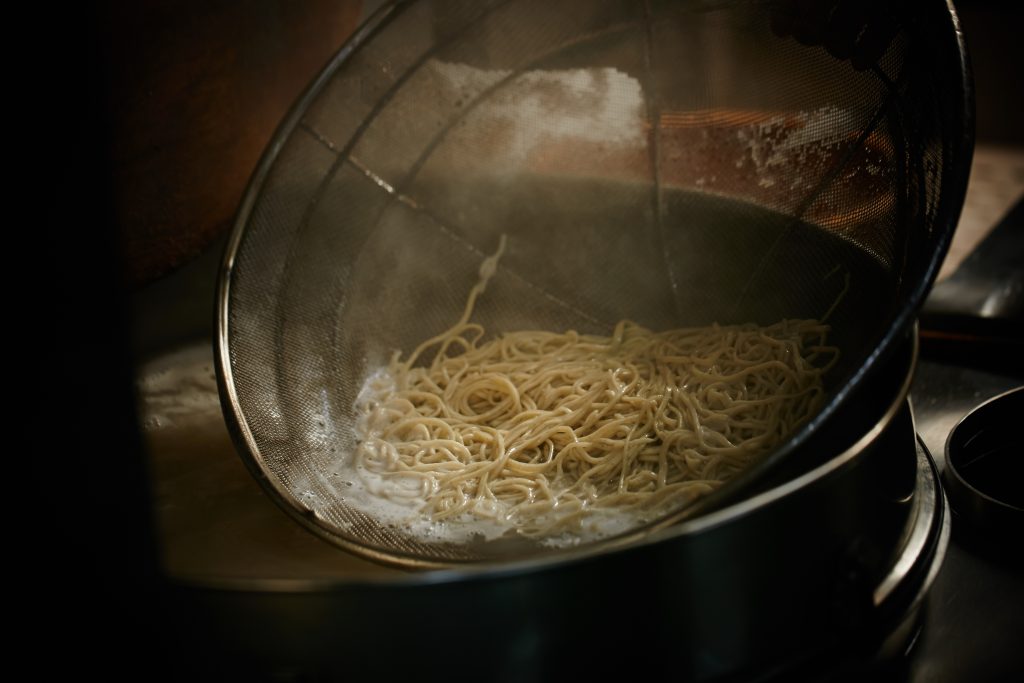
So what is the best way to eat Shinbashi’s soba? If you receive a set of both soba and tempura, you will get sauce in a bowl for tempura, and a cup of sauce and toppings for soba. They recommend not to completely immerse the soba in the sauce- called “tsuyu”- but instead dip it only halfway in so you can properly taste the soba. You may receive a small pot with a red handle, which contains the water the soba was boiled in, or sobayu. While soba by itself is considered quite healthy, much of the nutrients are lost in the water during the boiling process. By drinking the sobayu with your leftover tsuyu, you can get these precious nutrients back!

Shinbashi’s herring, known as “nishin,” is actually not from around Niigata but Hokkaido, and is a holdover from past culinary traditions. Originally, merchants from around YUKIGUNI would sell kimono to merchant ships and buy herring from Hokkaido, and smoke them so they would keep throughout the whole winter. Speaking of kimono, the newly renovated shop is decorated with traditional Shiozawa chijimi, incidentally by the same designer as that of the Echigo Winery in Minamiuonuma, which we wrote about HERE. English menus are also available.
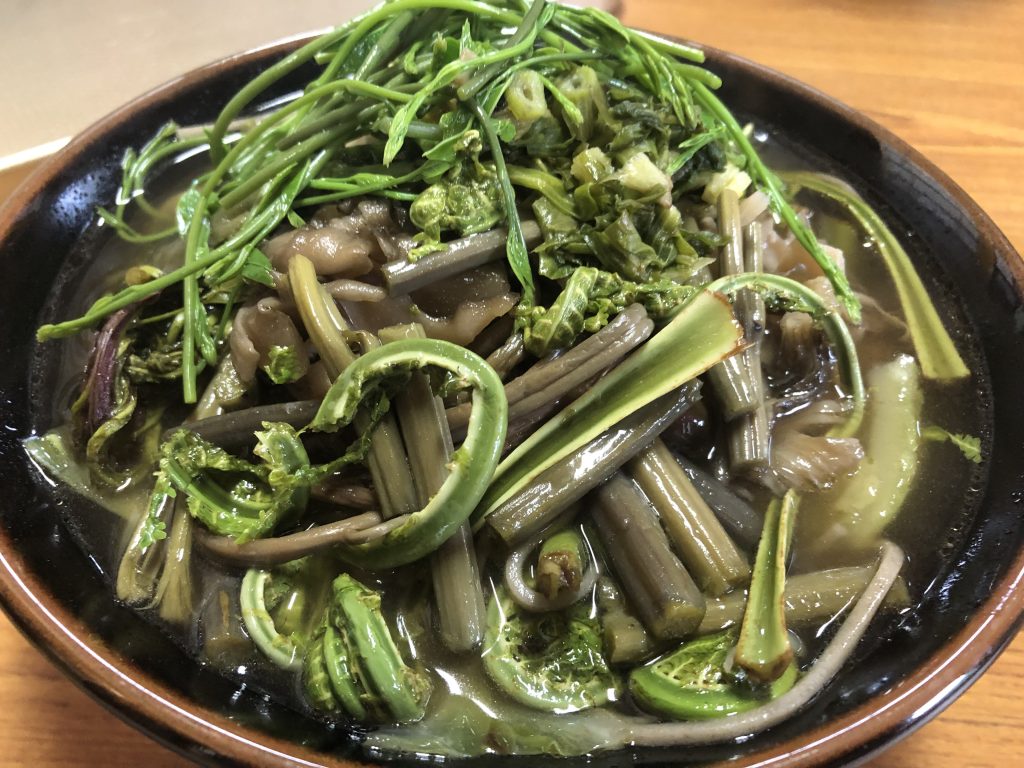
Other places to eat delicious Snow Country soba
There are plenty of places to explore around YUKIGUNI and eat more delicious and unique soba dishes. In terms of historical significance, the restaurant Miyano-ya near Hakkaisanson Shrine in Minamiuonuma is tied closely to the history of Hakkaisanson Shrine itself. The soba you can eat here has a long pedigree, and is noticeably different from soba you would find in town. Another hidden gem in Minamiuonuma is Ueda-ya, which is located nearby scenic Mt. Makihata. This establishment, nominally a Japanese bed and breakfast, or minshuku, opens for lunch on weekends to serve heaping plates full of sansai soba. Sansai are delicious mountain vegetables that are perfect as a soba topping, to learn more about picking your own sansai click HERE. Though travelers from abroad often worry about staying at minshuku for the first time, we recommend you do so in YUKIGUNI, including at Kayaya, a minshuku made from an old kominka house, or Deguchiya in Nagano’s Sakae village, where you can learn about nomadic hunters called Matagi. Click HERE to learn more about it.
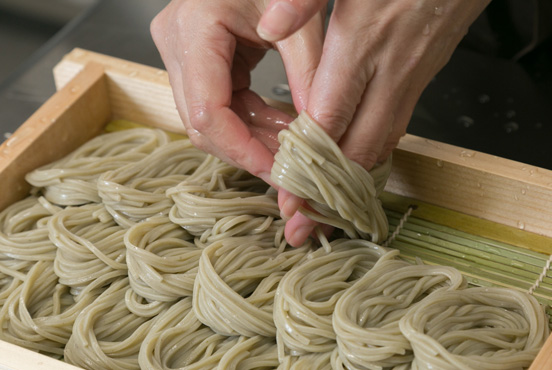
Other Snow Country Products made with soba
Aside from just noodles, here in YUKIGUNI there are plenty of delicious local products made from soba. Two of them are located in Tokamachi: soba inari and soba coffee!
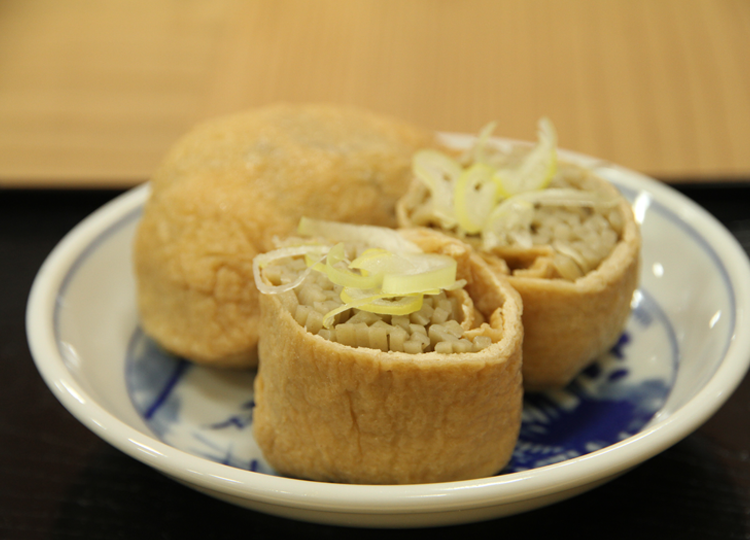
If you have eaten much sushi in this country you may be familiar with inarizushi- a sort of inside-out sushi roll with rice wrapped in a packet of deep-fried tofu called “aburaage.” You can purchase your special soba inari at Jirobata, a fresh food market and restaurant in Tokamachi. Jirobata is a great place to purchase homegrown vegetables, crafts, and sweets, including more local favorites like oyaki and anbu.
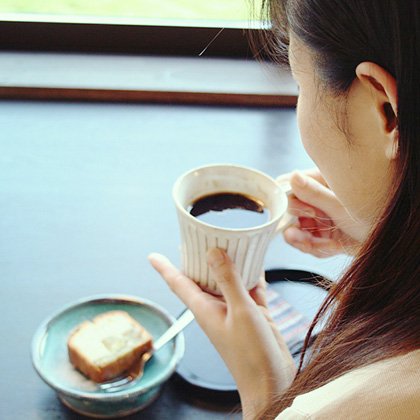
Soba no Sato Abuzaka is a market and restaurant specializing in soba dishes as well as a buffet full of fresh food. They grow a strain of soba known as “Toyomusume,” which was developed here in Niigata in 2003. They use this for fresh soba dishes as well as their popular soba coffee! Created as a collaboration with master barista Chihiro Yokoyama, it goes great with cakes and other desserts, including soba cookies, available at the cafe. The cafe also sells local Tsumari Soba Ale, a personal favorite of mine.
Adults may also enjoy some soba shochu during their stay in Snow Country. It is produced at the foot of Mt. Daigenta in Yuzawa, and sold by the Snow Country Tourism Information Center. This soba shochu is 40% alcohol by volume, yet surprisingly mellow, and great on the rocks. It is made with pesticide-free soba aged for 3 months in a local yukimuro, which can be likened to a sort of traditional “snow refrigerator.” This soba shochu is lovingly made in limited quantities, so grab yours while supplies last!
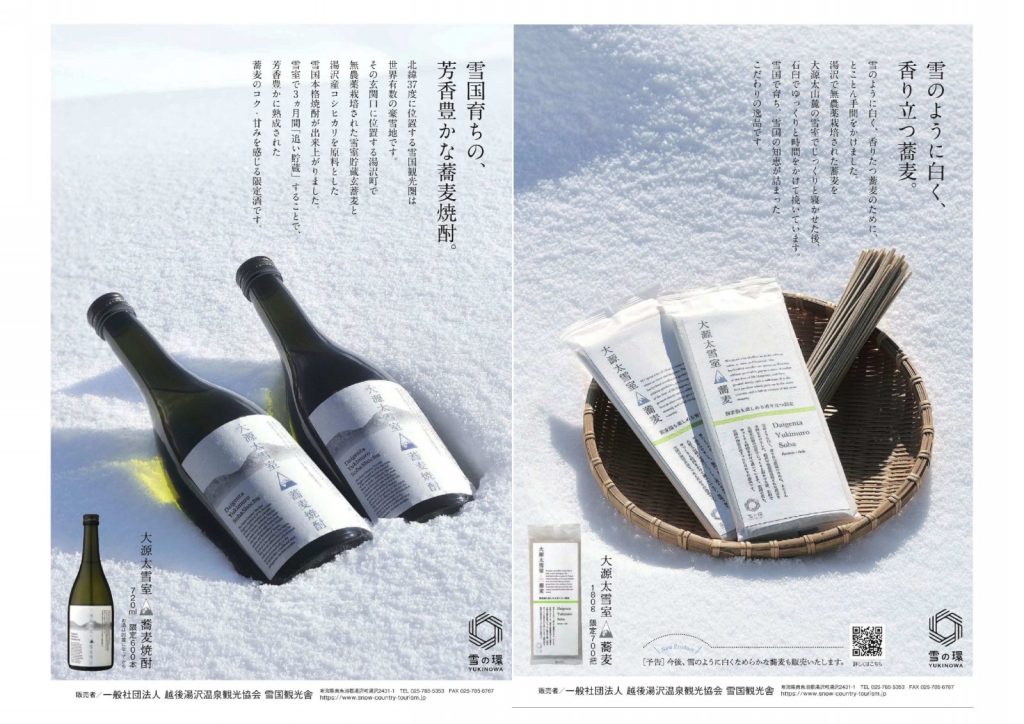
Information for Travelers
Shinbashi
Address: 488-1 Yuzawa, Yuzawa Town, Minamiuonuma District, Niigata Prefecture 949-6101
Hours: 11:00 am – 8:00 pm, closed Wednesday
Snow Country Tourism Association
Address: 2431-1 Yuzawa, Yuzawa Town, Minamiuonuma District, Niigata Prefecture 949-6101
Hours: 9:00 am – 5:00 pm
Ueda-ya
Address: 465 Shimizu, Minamiuonuma City, Niigata Prefecture 949-6553
Hours: 11:00 am – 2:00 pm, open for lunch on weekends and holidays
Miyano-ya
Address: 3742 Osaki, Minamiuonuma City, Niigata Prefecture 949-7251
Hours: Opens at 11:00 am until soba runs out, closed Thursdays
Soba no Sato Abuzaka
Address: 2132 Minamiabuzaka, Tokamachi City, Niigata Prefecture 948-0106
Hours: 11:00 am – 3:00 pm, closed Thursday
Jirobata
Address: 76-20 Minakuchisawa, Tokamachi City, Niigata Prefecture 948-0144
Hours: 9:00 am – 5:00 pm, restaurant open from 11:00 am – 2:00 pm

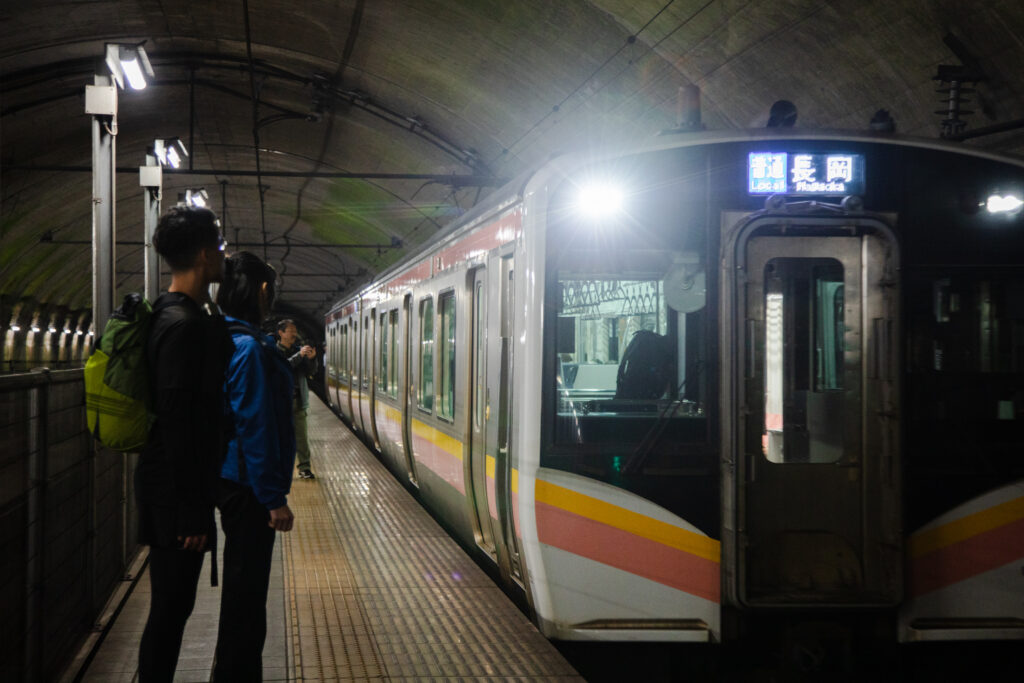
-1024x626-2.jpg)
